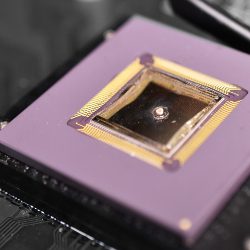
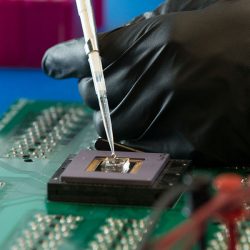
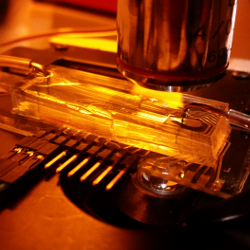
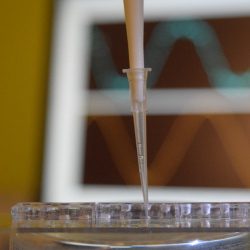
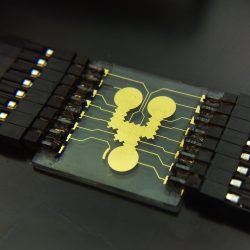
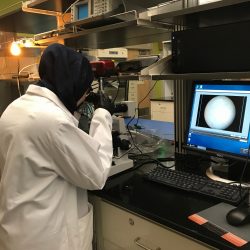






Danish zoologist Hans Ussing invented the Ussing chamber device to measure net ion transport across frog skin by measuring short circuit current across frog skin. Ussing chamber has since been used in many applications to determine tissue health.
Many existing Ussing chambers suspend tissue with glassware and supply nutrients to each side of the tissue with separate glass tubes. Further, these Ussing chambers typically use benchtop instrumentation for measuring parameters, such as transepithelial electrical resistance (TEER), to determine tissue health. Such Ussing chambers tend to be bulky and limited in the information they can derive during a particular test setup. Furthermore, these Ussing chambers do not lend themselves to scalability of analyzing multiple biological tissues at the same time with measurements of multiple parameters.
We are developing a more compact Ussing chamber having integrated instrumentation and supporting microfluidic system for measuring multiple parameters on multiple biological tissues simultaneously during a test setup. The photograph below shows an implementation of the advanced Ussing chamber with two chambers operating simultaneously. Each chamber has a sub-chamber that house a tissue under examination, microfluidic channels allowing media to flow on both sides of the tissue independently, a set of electrodes (not shown) above and below the tissue to perform TEER measurement.

Walter Scott, Jr. College of Engineering
www.engr.colostate.edu
700 Meridian Ave
1301 Campus Delivery
Fort Collins, CO 80523-1301
(970) 491-3366
School of Biomedical Engineering
www.engr.colostate.edu/sbme
700 Meridian Ave
1376 Campus Delivery
Fort Collins, CO 80523-1376
(970) 491-7157
Walter Scott, Jr. College of Engineering
www.engr.colostate.edu
700 Meridian Ave
1301 Campus Delivery
Fort Collins, CO 80523-1301
(970) 491-3366
School of Biomedical Engineering
www.engr.colostate.edu/sbme
700 Meridian Ave
1376 Campus Delivery
Fort Collins, CO 80523-1376
(970) 491-7157



